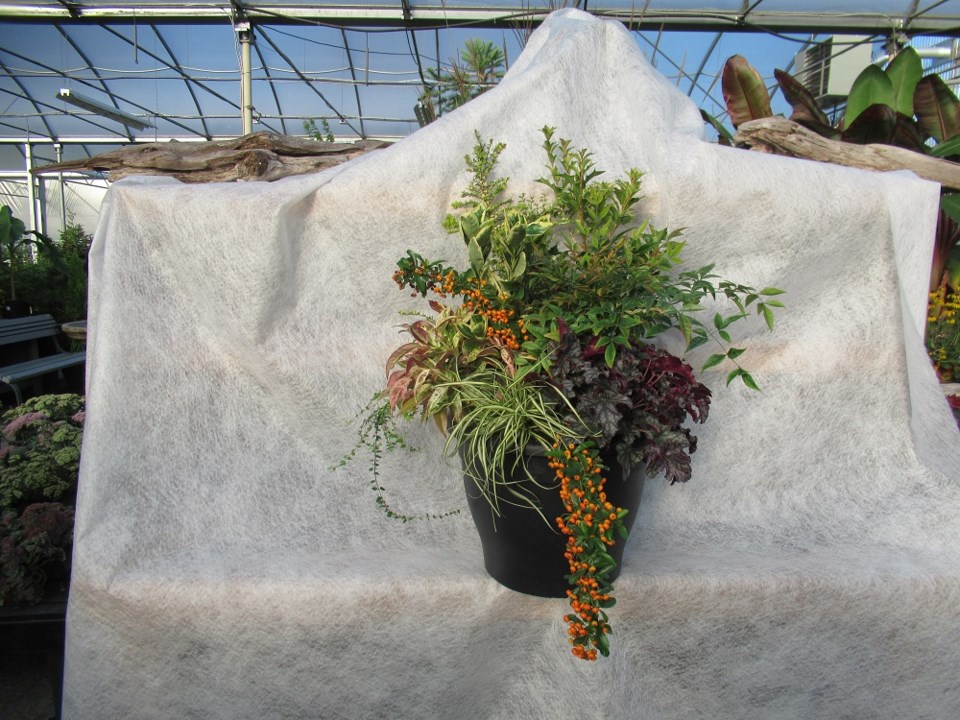After last year’s devastating cold spell, which caused incredible damage to so many of our garden plants, we should be doing a number of things over the next few weeks to prep our gardens for winter.
Here are the top 10 things I recommend.
- Fall is for planting, and a beautiful spring garden can begin now by planting bulbs, perennials, shrubs and trees which will add a great deal of beauty to your spring display. The key, however, is to choose plants that are hardy to the plant zone in which you live. As an example, the South Surrey and Vancouver areas are rated zone 7. The Fraser Valley is generally considered a zone 6. By using plants with a hardiness rating of zones, 4,5,6 and 7, again depending on where you live in the Lower Mainland, you should be fine. Other areas of the province will be zoned differently. Wherever you live, make sure you provide good drainage and for more tender plants, situate them in areas out of the cold winter winds. When you plant in containers, it’s important to remember that you lose at least one zone of hardiness, so set your containers in the warmest location on your patio and have a protective wrap, such as N-Sulate, available for a quick cover up in case of a severe cold spell.
- Wet soils, combined with very cold temperatures, are particularly tough on plants because these conditions will cause plant roots to freeze more severely and the soil to stay wet longer following the thaw. After the next heavy rainfall, check out the places where water is sitting and work fir bark mulch into the soil so that it drains far more effectively.
- Before our heavy fall rains begin, it is very important to both aerate your lawn and apply a two-centimetre layer of washed sand to improve the drainage. Dolopril lime, applied at this time of the year, will help regulate the soil’s pH level, making it less appealing to moss. It’s also a good time to apply Scott’s Grub Out with BTK to help control any grub eggs that might be in your soil.
- Regenerative gardening involves keeping your soil covered over the winter months by using something, like a layer of mushroom compost, on top of your soil or by planting a cover crop, like fall rye, buckwheat or a winter blend of grass.
- Some newly planted trees and shrubs may have struggled a bit this year due to water restrictions. By working some fine bark, as well as a great compost, like Sea Soil, into the planting areas, it will really help their struggling roots which continue to be active all winter.
- Make sure you have a compost bin or designated area to place all your finished annuals, old vegetable stems, fallen tree leaves, grass clippings and household vegetable and fruit leftovers. Remember: for composting to work effectively, alternating the vegetative material and the soil, like the layers of a cake, is very important.
- The loss of so many roses last year was unfortunate because all they needed was to have their bud unions covered with about 25 cm of bark mulch, and they would have survived the coldest weather.
- It’s a great time to prune back unruly evergreens, like junipers, cedars and cypress, to make them less susceptible to snow damage. Pruning spruce, fir or pine must be left until spring and only after their buds have popped.
- Many so-called ‘hardy’ palms, like the Dutch windmill variety, were lost last year because the weather was just too cold. Plan to relocate potted palms and other tropical plants to a heated garage or foyer. Palms planted in the ground need to be sheltered with a covering and have either an electric heater or heating cables inside to protect the roots from severe frost.
- Any bulbs, tubers or rhizomes that you’d like to overwinter need to be in a cool, but frost-free area to ensure they survive. Perhaps it’s time to rethink your current protected area to make sure it is suitable.
These are some of the key things we need to consider as we inch closer to colder temperatures.
All these tasks will help save many of our plants this winter.



